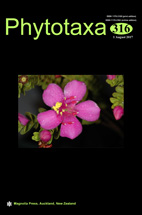Abstract
The diversity of the genus Cylindrospermopsis was underestimated, and the species in majority were described from natural populations, and not evaluated genetically except for the widely reported C. raciborskii. In the study, five new records (C. catemaco, C. philippinensis, C. taverae, C. africana and C. helicoidea) were herein described from Chinese freshwater bodies. By isolating their unialgal cultures, they were taxonomically evaluated based on phenotypic and genetic characters (16S rRNA, ITS-L, cpcBA-IGS and rpoC1). New insights into the Cylindrospermopsis taxonomy were obtained that different species within the genus could not be fully distinguished. The present result suggested that morphospecies based taxonomy within cyanobacterial genera will still be used, waiting for further verification and taxonomic revision at species level based on the modern approaches.

